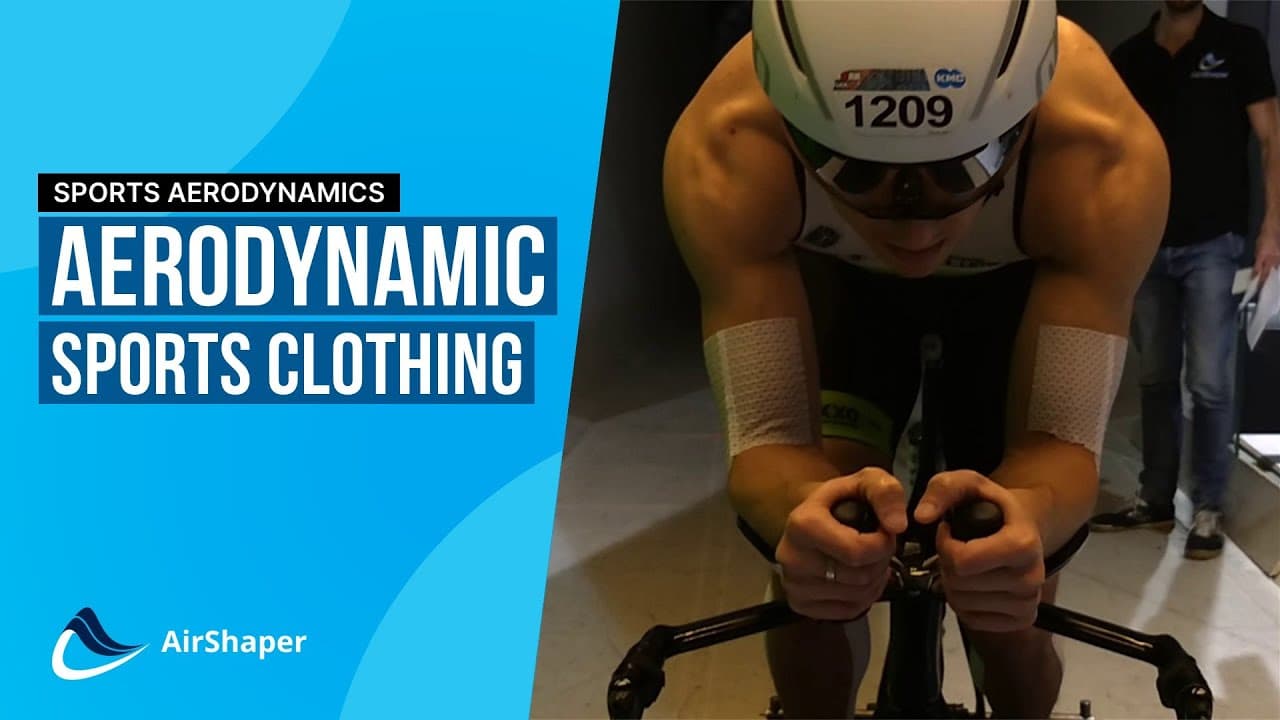While training and strength can get you far in many forms of sport, the key to endurance racing is energy efficiency. To maximise this, every aspect of an athlete and their equipment needs to be optimised. For cyclists, this includes their bike, helmet, riding position, posture and even their clothing.
In a previous article, we teamed up with cyclist, Ismaël Ben-Al-Lal, who was training for a gruelling Ironman. We created a 3D virtual model of Ismaël and used CFD to improve his riding position on his Aero bike for aerodynamic gains.
In this article, we will analyse the aerodynamic impact of athlete clothing. We will also explain how CFD can be used to improve the aerodynamic efficiency of cycling gear.
The aerodynamic effect of clothing
Whenever an object travels through air, it generates aerodynamic drag. One way to minimise this drag is to reduce the frontal area of the object. This is why cycling apparel is made of thin, elastic material which hugs the shape of the body. This helps the athlete 'cut' through the air and travel faster for the same power input at the pedals.
Optimising the aerodynamics of clothing may seem like a minimal gain. However, if you’ve ever ridden a bike through wind, you can appreciate the impact of air resistance. Minimising this, particularly in endurance racing, can lead to significant advantages in overall speed and performance.

Although tight-fitting clothes reduces total drag, there's still room for improvement as it does not actively reduce the rider's wake. To investigate how clothing can be designed to minimise a cyclist's wake, we conducted a CFD and wind tunnel study.
Golf ball dimples
First, let's look into the aerodynamic behaviour of golf balls. Unlike smooth balls such as ping-pong balls or cricket balls, golf balls are covered in small dimples on the surface.
When air flows around a perfectly smooth ball, a laminar boundary layer is created. This region of slower moving air grows thicker as it continues to stick to the ball's surface. As the flow moves beyond the halfway point, it needs to contract. This makes it more and more difficult for the flow to remain attached to the surface.
Eventually, the flow separates from the surface and a large wake is created behind the golf ball. This wake increases pressure drag and slows the golf ball down as it travels through air.
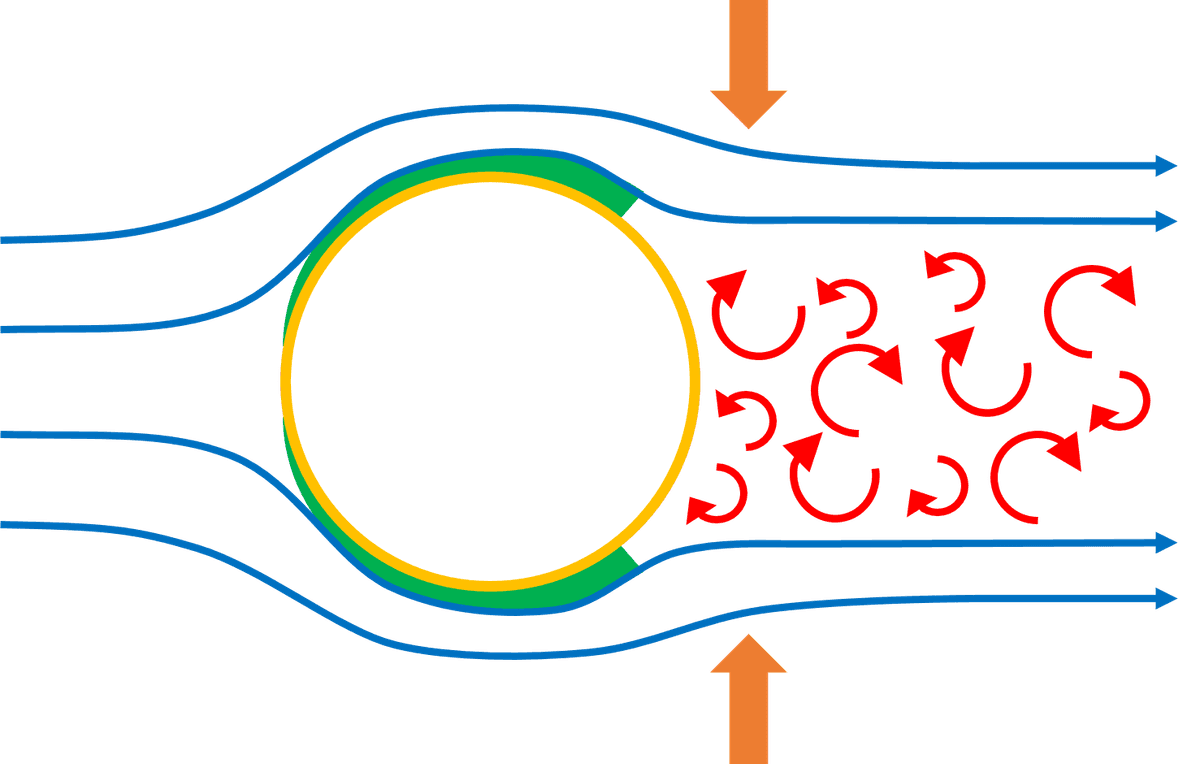
Golf balls can shrink the size of this wake by using dimples which increases surface roughness. This generates a turbulent boundary layer which mixes with the surrounding air and retains more kinetic energy. This energy allows the airflow to remain attached for longer, reducing the golf ball's wake. The resulting reduction in pressure drag due to this reduced wake allows the golf ball to fly nearly twice as far.

This however, does not mean that every surface should be covered with dimples to make it more aerodynamically efficient. There is a good reason why you don’t see airplanes or hypercars covered with dimples. While increased surface roughness can reduce pressure drag in some cases, it can also increase friction drag of the surface.
In situations like golf balls where pressure drag is magnitudes higher than friction drag, the dimples can provide a significant benefit. However, this is not the case for other applications where maintaining lower friction drag is more important to overall aerodynamic performance.
Aerodynamic clothing
Aerodynamic clothing utilises the same concept as golf balls, where increasing the surface roughness is intelligently used to reduce drag. There are many examples of this within the sports sector. Dimples are often found on professional cycling helmets, while rough patches were used in the design of the Speedo LZR swimsuit.
These rough patches created a turbulent boundary layer and reduced the wake of the swimmer’s start. It was later banned after the 2008 Beijing Olympics. Although water is a different fluid to air, the fundamental principles remain the same.
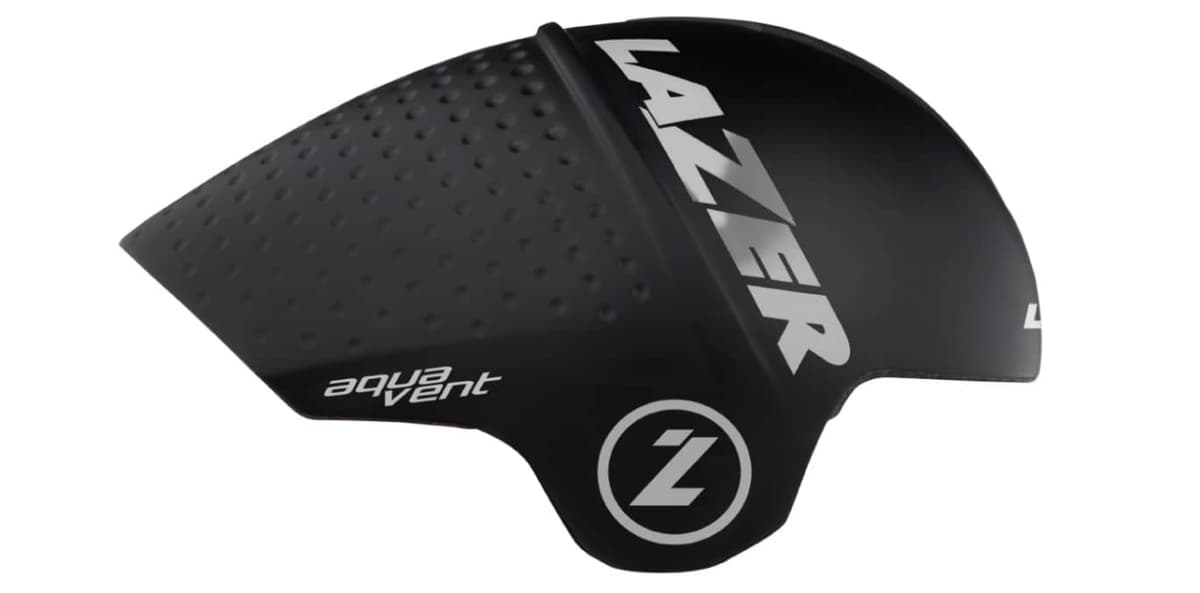
Taking this concept further, we partnered with Belgian company Bioracer who develops aerodynamic clothing for cyclists. Their products feature smooth surfaces in some areas and rough surfaces in others.
Airflow around a cyclist
The flow around a cyclist is a complex combination of laminar and turbulent flows. In some areas the flow is attached, while in others the flow has separated.
Every athlete varies in body shape and has a different riding position. Therefore, off-the-shelf aerodynamic clothing does not often maximise each individual's aerodynamic performance. To develop true aerodynamic clothing, it must be custom fit for each specific athlete.
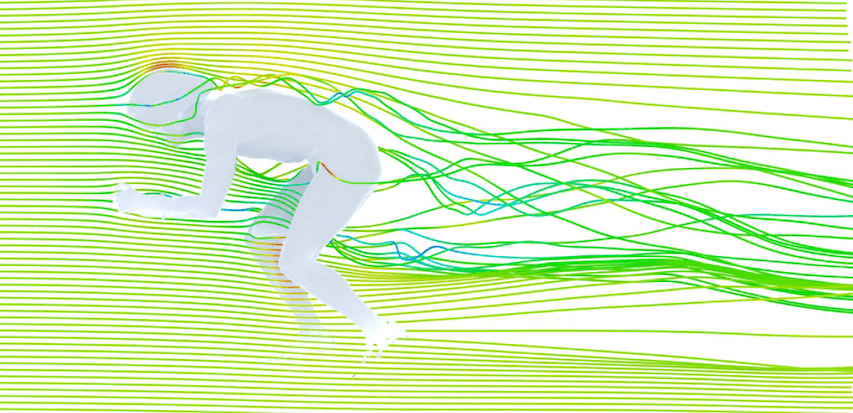
Custom aerodynamic clothing
To create a bespoke clothing solution for Ismaël Ben-Al-Lal, we went to the Bike Valley wind tunnel with Bioracer. Our aim was to experiment with roughness increasing materials in different locations around the cyclist and analyse the aerodynamic effect.
Using the virtual model of Ismaël generated by a 3D scan, we ran some initial CFD simulations. After some analysis we identified several areas of flow separation. Instead of covering the whole speedsuit in rough patches, we applied them to specific locations on Ismaël's arms, legs and body. These locations were based on where the CFD results showed signs of flow separation.
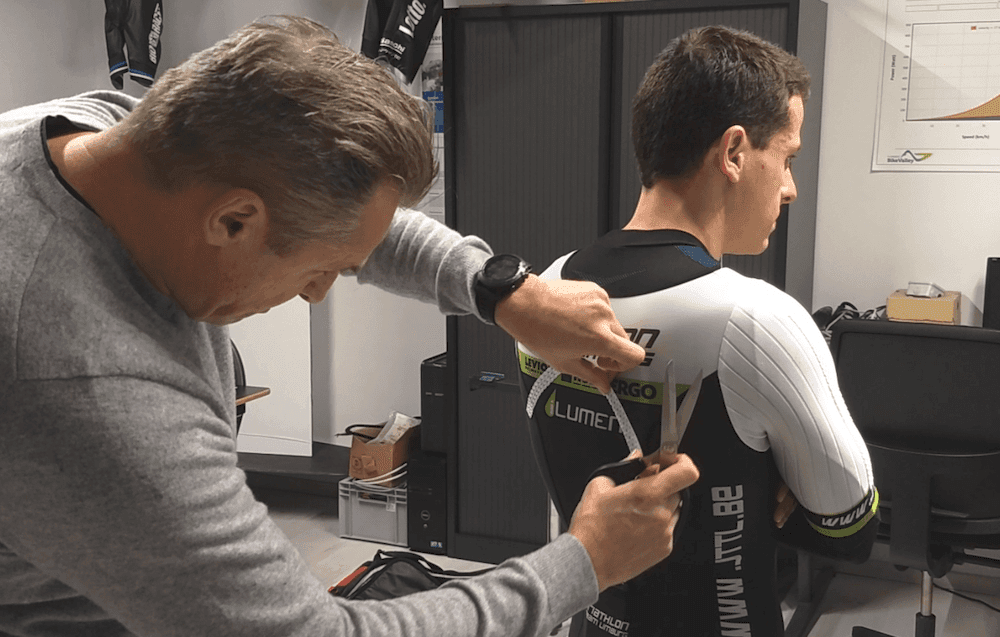
With these rough patches secured, we conducted a range of wind tunnel tests and saw measurable drops in aerodynamic drag. Ismaël and Bioracer can then use these results to help design his next bespoke outfit with improved aerodynamic performance.
Simulation can be the key to unlocking performance in many industries and applications. By using CFD to guide wind tunnel testing, we developed unique performance clothing which will help Ismaël ride faster for longer.
